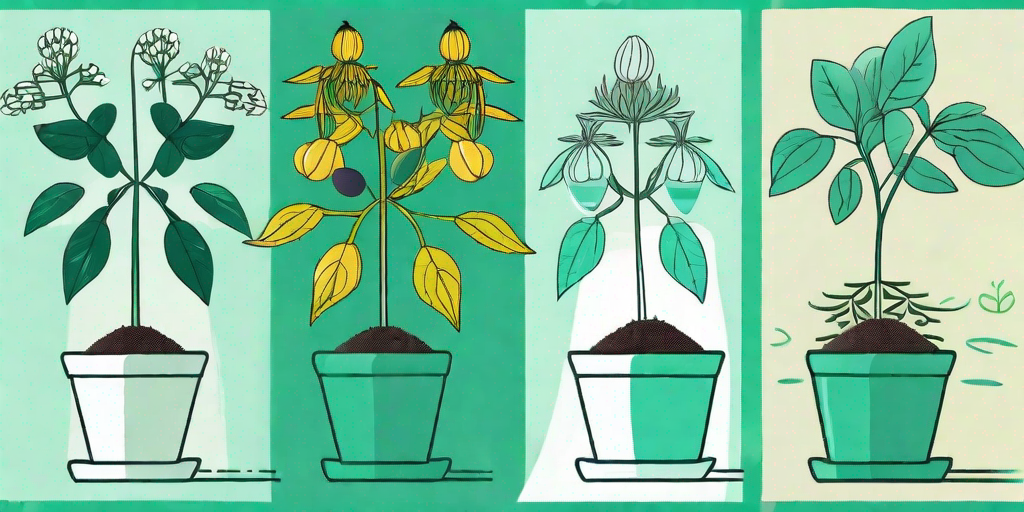
Are you tired of the same old flavors in your food? Do you want to add a dash of excitement to your culinary adventures? Well, look no further than the Anise plant! This versatile herb is not only easy to grow and harvest, but it also packs a punch when it comes to flavor. So, let's dive into the world of Anise and explore how you can make it a part of your life.
The Anise Plant: A Flavorful Introduction
Originating from the Eastern Mediterranean region and Southwest Asia, the Anise plant (Pimpinella anisum) is a flowering plant that belongs to the Apiaceae family. This herb is known for its aromatic seeds that have a sweet, licorice-like flavor, which is a hit in many cuisines worldwide.
But the Anise plant isn't just a one-trick pony. Apart from its culinary uses, it also has a long history of medicinal use. From aiding digestion to soothing coughs, this herb is truly a gift that keeps on giving.
Growing Your Own Anise: A Green Thumb's Guide
Choosing the Right Spot
Like any plant, Anise has its own set of preferences when it comes to its growing conditions. This sun-loving herb prefers a well-drained soil and a spot that receives full sun. So, make sure to choose a sunny spot in your garden where the soil isn't too soggy.
And if you're a city dweller with no garden, don't fret! Anise can also be grown in containers. Just make sure to provide it with plenty of sunlight and good drainage.
Planting the Seeds
When it comes to planting Anise, timing is everything. The best time to plant is in the late spring, after the last frost. The seeds should be planted about half an inch deep and 12 inches apart.
Remember, patience is a virtue when growing Anise. The seeds can take up to two weeks to germinate, so don't lose hope if you don't see any sprouts right away.
Caring for Your Anise Plant
Anise is a relatively low-maintenance plant, but it does require some care. Regular watering is crucial, especially during dry spells. However, be careful not to overwater, as this can lead to root rot.
As for feeding, a general-purpose fertilizer applied in the early spring should do the trick. And don't forget to weed regularly to prevent any competition for resources.
Harvesting and Using Your Anise
When and How to Harvest
After all your hard work, it's finally time to reap the rewards. Anise seeds are typically ready for harvest in late summer or early fall, when they have turned a grayish-brown color.
To harvest, simply cut the entire head of the plant and hang it upside down in a warm, dry place. Once dry, shake the heads over a container to collect the seeds. Store them in an airtight container and they'll be ready to use whenever you need them.
Culinary Uses
Now for the fun part - using your homegrown Anise! This herb is incredibly versatile and can be used in a variety of dishes. From breads and cakes to stews and curries, the possibilities are endless.
Here are a few ideas to get you started:
- Add a sprinkle of Anise seeds to your morning oatmeal for a sweet, licorice-like twist.
- Use Anise in your baking for a unique flavor. Anise cookies, anyone?
- Infuse your cocktails with Anise for a sophisticated touch. An Anise-infused gin and tonic sounds pretty good, doesn't it?
FAQs
Is Anise the same as Star Anise?
No, despite the similar names, Anise and Star Anise are two different plants. While they both have a similar licorice-like flavor, they come from different plant families and have different uses.
Can I grow Anise indoors?
Yes, Anise can be grown indoors in containers. However, it requires plenty of sunlight, so make sure to place it near a sunny window.
Is Anise safe to consume?
Yes, Anise is safe to consume. However, like any herb, it should be used in moderation. Excessive consumption can lead to mild side effects like nausea and allergic reactions.
So, there you have it - your comprehensive guide to the Anise plant. From growing and harvesting to using this flavorful herb, you now have all the knowledge you need to spice up your life with Anise. Happy gardening and cooking!











